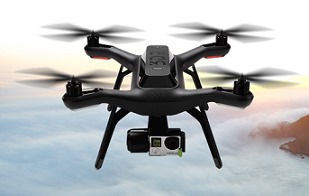다음은 AutoQuad의 오픈 소스 32 bit ESC(Electronic Speed Controller) Version2의 설명입니다.
Why the need for specialized ESCs:
왜 고급 ESC가 필요할까요:
Most standard ESCs are not designed for multirotor applications. Most ESCs are build and configured with an airplane application in mind, they are programmed to increase and decrease the throttle command towards the motor in a gentle way for obvious reasons. A motor fast accelerating and decelerating in an airplane or helicopter would either break the gears or put great stress on the prop and airframe.
대부분의 표준 ESC는 멀티로터에 사용하기 위해서 설계되지는 않았습니다. 대부분의 ESC들은 애초에 비행기에 맞도록 만들어지고 고안되었습니다. 그들은 분명한 이유 등으로 스로틀 명령으로 모터의 속도를 부드럽게 올리고 내리도록 프로그램되었습니다. 비행기나 헬리콥터에서 모터의 빠른 가속과 감속은 기어를 파괴하거나 기체의 프로펠러(Prop.)에 큰 손상을 주기 때문일 것입니다.
A multirotor is different. We would rather have a total linear curve and able to change the motor speed, and thus the thrust, as fast as possible to achieve a perfectly stable platform.
멀티로터는 다릅니다. 우리는 오히려 전체적으로 선형 커브를 갖도록 하여 모터 속도를 변화시키는 것이 가능하도록 하였기 때문에 완전하게 안정적인 비행을 성취가능한 빨리 추력을 낼 것입니다.
While the current ESCs used in most multrotor applications work considerably well, there is a lot of room for improvement. Using the same ESC but loading it with dedicated optimized firmware will increase the handling and stability of your multirotor greatly.
대부분의 멀티로터 응용에서 사용되어진 현재의 ESC들은 상당히 잘 동작하지만 여기에는 많은 개선의 여지가 있습니다. 같은 ESC를 사용하여 적용되어진 최적화된 펌웨어를 로딩하는 것은 여러분의 멀티로터의 조종성과 안정성을 크게 증가시킬 것입니다.
AutoQuad and most other flight controllers will benefit from ESCs that can operate at PWM frequencies of at least 400hz and are stripped from a controlled throttle curve.
AutoQuad와 대부분의 다른 비행제어기(FC)들은 적어도 400Hz의 PWM 주파수에서 동작가능한 ESC로부터 잇점을 누릴 것이고 기존의 스로틀 커브로부터 탈피하게 될 것입니다.
That's where the ESC32 comes in, a superior 32 bits ESC with a lot of interfaces and room for future enhancements.
이것이 ESC32가 나온 이유이며, 이 최상의 32 비트 ESC는 다양한 인터페이스를 지원하며 미래의 개선을 위해서 많은 리소스가 남아 있습니다.
Specifications for Version 2
STM32F103 72MHz 32bit ARM
All N-FET design with gate drivers
2S through 5S battery voltage
Option to power logic side via UART or PWM IN +5v
CAN transceiver hardware support onboard
Firmware written completely in C
Cortex SWD connector pads for real-time debugging
Communications ports: PWM IN / UART / I2C / CAN Bus
Communications protocols: PWM IN / CLI / binary / 1-wire / CAN / I2C**
4KHz to 64KHz PWM out
Current sensing / limiting with real shunt resistor
Virtual current limiter
Regenerative braking (experimental)
Closed loop control modes
Lot of available RAM / FLASH for experimentation and development
** I2C drivers have not yet been written
'Radio Control > ESC' 카테고리의 다른 글
| 대표적인 상업용 VESC 구입처 (1) | 2018.01.22 |
|---|---|
| PX4ESC의 스펙 (0) | 2015.12.08 |
| RapidESC, 오픈 소스 펌웨어 개발 사이트 (0) | 2014.06.19 |
| RapidESC FAQ's (0) | 2014.06.11 |
| RapidESC Flashing (0) | 2014.06.03 |



